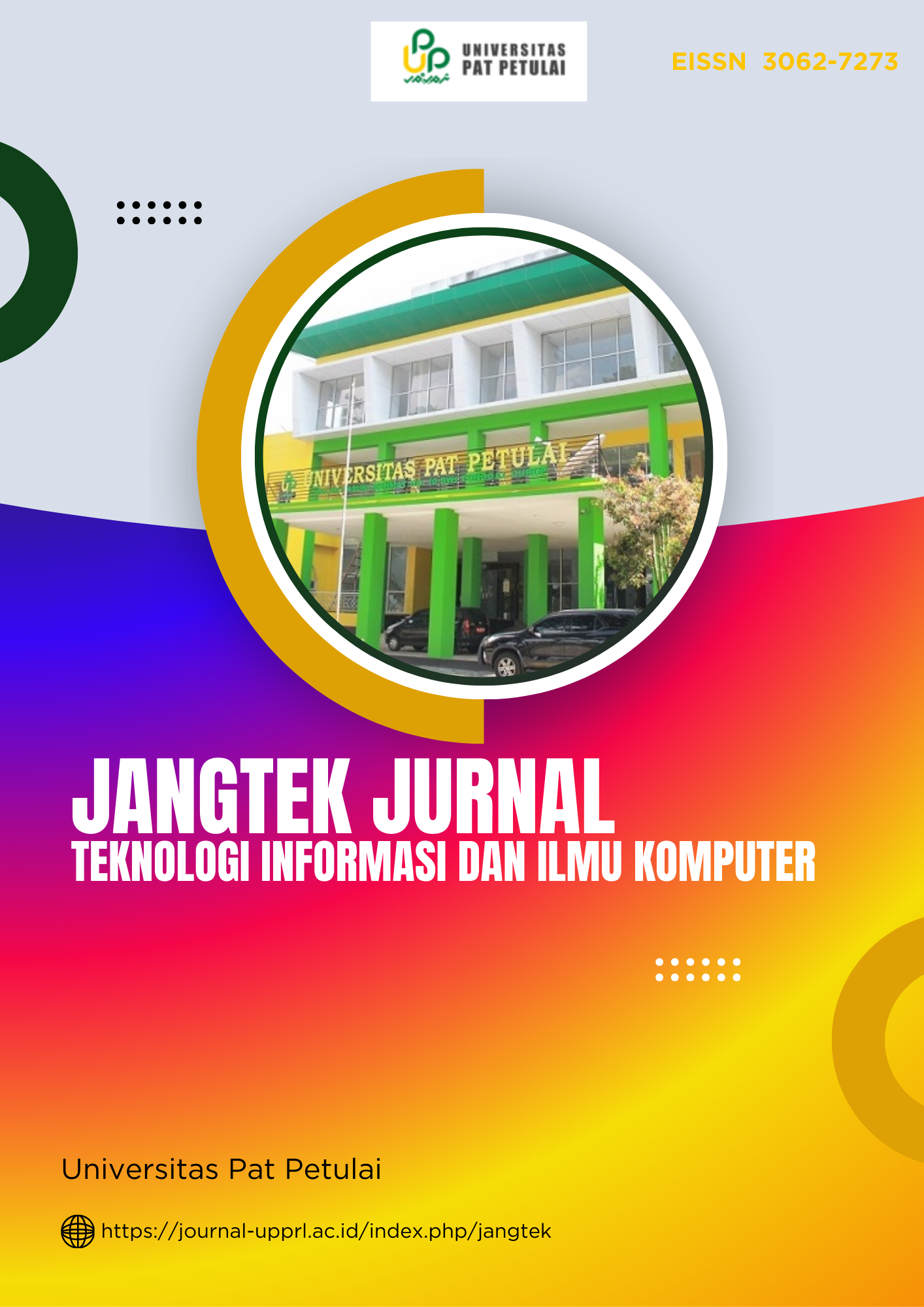Automatic System of Microcontroller-Based Pepper Seed Threshing Machine (Case Study of Air Lanang Village)
Keywords:
ESP32 Microcontroller, Ultrasonic Sensor, Automation, Pepper Seed Thresher MachineAbstract
This study aims to develop an automation system for a pepper seed thresher machine using an ESP32 microcontroller and ultrasonic sensors. The system is designed to improve efficiency and accuracy in the pepper seed threshing process, reduce the manual labor burden on farmers, and enhance productivity. The research method includes hardware and software design, prototype creation, and system testing. The results indicate that the system can automatically detect and separate pepper seeds with high accuracy. The implementation of this technology is expected to be applied on a larger scale and provide significant benefits to pepper farmers.
References
Adriansyah, A., & Hidyatama, O. (2013). rancang bangun prototipe elevator menggunakan microcontroller arduino atmega 328p. Jurnal Teknologi Elektro, 4(3), 100-112.
Anjiu, Leo D, dan Suhendra S. 2021. Modifikasi dan uji performansi mesin perontok lada dengan mekanisme perontok silinder berjaring. Turbo: Jurnal Program Studi Teknik Mesin, 10(2).
Gupta, R. (2013). Antimicrobial and antioxidant properties of Piper nigrum L. International Journal of Pharmaceutical Sciences and Research, 4(1), 153-157. DOI: 10.13040/IJPSR.0975-8232.4(1).153-57.
Linarta, A., & Nurhadi, N. (2019). Aplikasi Bel Sekolah Otomatis Berbasis Arduino Dilengkapi Dengan Output Suara. Informatika, 10(2), 1-7.
Mardawati. (2015). Analisis Faktor-Faktor Yang Mempengaruhi Pendapatan Usahatani Pinang Kecamatan Sawang Kecamatan Aceh Utara. XVI, 61.
Maulana, E., & Purnama, R. A. (2017). Pemanfaatan Layanan SMS Telepon Seluler Berbasis Mikrokontroler Atmega328p Sebagai Sistem Kontrol Lampu Rumah. Jurnal Teknik Komputer Amik BSI, 3(1), 93-99.
Michael, D., & Gustina, D. (2019). Rancang Bangun Prototype Monitoring Kapasitas Air Pada Kolam Ikan Secara Otomatis Dengan Menggunakan Mikrokontroller Arduino. IKRAITH INFORMATIKA: Jurnal Komputer Dan Informatika, 3(2), 59-66.
Muthalib, I. S., Asmal, S., Indah, A. B. R., Bahri, S., Hanafi, R., Amar, K., ... & Tahir, N. (2021). Design of Mechanical Pepper Sorting and Screening Equipment for Pepper Post Harvest Optimization. JURNAL TEPAT: Teknologi Terapan untuk Pengabdian Masyarakat, 4(2), 166-176.
Phahlevi, R. (2013). Faktor-faktor yang mempengaruhi pendapatan petani padi sawah di Kota Padang Panjang. Jurnal Ekonomi Pembangunan, 1(02).
Purnomo, J., Sukemi, S., Parwito, P., & Ermatita, E. (2022). Implementation of Fuzzy C-Means and Topsis in College Rankings. Journal of Information Systems and Informatics, 4(4), 1094-1111. https://doi.org/10.51519/journalisi.v4i4.409
Pradana, R. A. (2019). Mikrokontroler ESP32, apa itu?(bagian 1)# Microcontrollers101.
Sugianto, S., & Hasdiansah, H. (2020, December). APLIKASI SISTEM SENTRIFUGAL PADA ALAT PERONTOK LADA DAN PELUKA KULIT LADA. In Prosiding Seminar Nasional NCIET (Vol. 1, No. 1, pp. 29-36).
Sugiyono. (2015). Metode Penelitian Kuantitatif, Kualitatif, dan R&D. Bandung: Alfabeta
Sugiyono. (2016). Metode Penelitian Kuantitatif, Kualitatif, dan R&D. Bandung: Alfabeta.
Sugiyono. (2017). Metode Penelitian Bisnis Pendekatan Kuantitati, Kualitatif, Kombinasi, dan R&D.
Syahindra, W., & Murlena, M. (2024). Computer-Controlled Automation of Coffee Bean Drying and Grinding System menggunakan Sensor Infra Red dan Sensor Fototransistor. Arcitech: Journal of Computer Science and Artificial Intelligence, 4(1), 42-56.
Wafikah, U. (2018). Analisis Pengaruh Tenaga Kerja Dan Luas Lahan Terhadap Pendapatan Petani Merica Di Kecamatan Kindang Kabupaten Bulukumba. Skripsi. Fakultas Ekonomi Dan Bisnis Islam Universitas Islam Negeri Alauddin Makassar.
Downloads
Published
Issue
Section
License
Copyright (c) 2024 JANGTEK JURNAL : Teknologi Informasi dan Ilmu Komputer

This work is licensed under a Creative Commons Attribution-NonCommercial-ShareAlike 4.0 International License.
Authors who publish with JANGTEK JURNAL : Teknologi Informasi dan Ilmu Komputer agree to the following terms:
- Authors retain copyright and grant the journal right of first publication with the work simultaneously licensed under a Creative Commons Attribution-NonCommercial-ShareAlike 4.0 International License (CC BY-NC-SA 4.0) that allows others to share the work with an acknowledgment of the work's authorship and initial publication in this journal.
- Authors are able to enter into separate, additional contractual arrangements for the non-exclusive distribution of the journal's published version of the work (e.g., post it to an institutional repository or publish it in a book), with an acknowledgment of its initial publication in this journal.
- Authors are permitted and encouraged to post their work online (e.g., in institutional repositories or on their website) prior to and during the submission process, as it can lead to productive exchanges, as well as earlier and greater citation of published work (See The Effect of Open Access).




